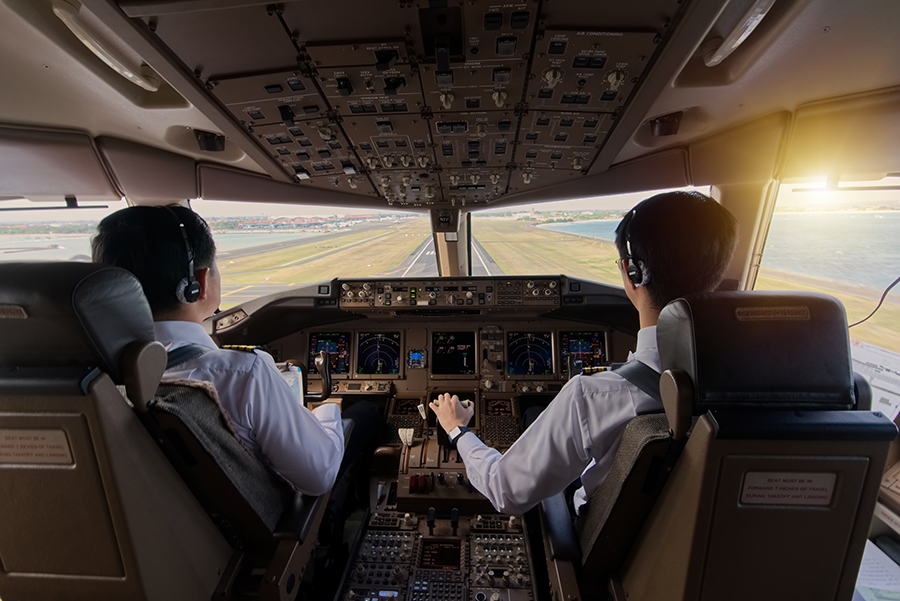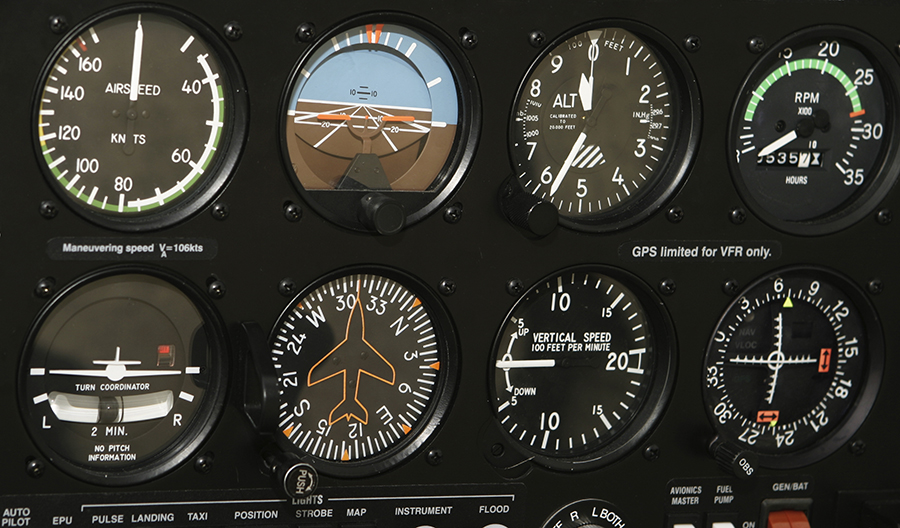-
16 Landing Tips for Private Pilots
- 1) Deal With One Thing at Once
- 2) Request a Longer Final Approach
- 3) Memorize the Attitude on Takeoff
- 4) Be Aware of The Wind
- 5) Practice During the Day
- 6) Keep a Good Scan Rate - Fly by the Numbers
- 7) Eyes to the End of the Runway
- 8) Keep a Constant Aim Point
- 9) Use Flap Accordingly
- 10) Keep an Eye on the PAPIs
- 11) Learn Crosswind Landings
- 12) Nail ALL the Numbers
- 13) Know What a Good Landing is
- 14) Fly The Airplane All the Way
- 15) Brief Yourself Beforehand
- 16) ‘Gates’ for a Good Approach
-
Private Pilot Landing FAQ
- How Do Pilots Land Perfectly?
- Why Are My Landings So Hard?
-
How Do I Stop Bouncing When Landing?
- How Can I Improve My Landing Skills?
-
Final Thoughts
While landing an airplane might initially seem a daunting task, trust us, it gets easier and easier with time. You can implement a few things right now that will help get you on the right track. Today we look at 16 private pilot landing tips that are all easily adopted. We’ll also address some common questions asked by student pilots.
Here’s what you need to know…
16 Landing Tips for Private Pilots
There’s no substitute for good quality flight training. However, there are also things that you can work on yourself while ‘bashing the circuit’. Here’s our list of 16 private pilot landing tips to get you touching down smoothly.
1) Deal With One Thing at Once
Have you ever tried to juggle while riding a unicycle?
Our point?
Trying to fix two things at once means you do neither task well.
While the above analogy is a little far-fetched, it is similar when flying.
Juggling airspeed, runway centerline, and altitude simultaneously can prove to be a real challenge.
Here’s our advice.
Break the landing down into several ‘chunks’. And deal with each part separately. Once you have got one squared away, you’ll find the remaining areas easier to focus on. And over time, you’ll naturally start doing all of the above together.
How do we achieve this?
Easy.
Here’s a quick rundown: –
- Nail your speed early. The downwind leg is the place to get nice and comfy and the aircraft trimmed out. Once you’ve got a nice equilibrium, you’ll only need to make minor changes when configuring the aircraft.
- Next, get established on the runway centerline nice and early. Once your speed and alignment are dialed in, all you’ll need to focus on is the descent.
- Trim for speed, not an attitude. If you are struggling with getting in trim or doing too many things at once, consider configuring slightly early.
2) Request a Longer Final Approach
Unlike other forms of transport, there is no stopping in an airplane, only moving forward.
Meaning…
More distance equals more time to think.
A nice way to take the pressure off and get in the zone is to fly a long final approach. There is no shame in asking air traffic control for a longer final. That way, you can make your adjustments early and focus entirely on keeping on the approach path accurately, with fewer distractions.
3) Memorize the Attitude on Takeoff
The flare is considered by many new pilots to be the hardest thing to judge when making a landing in a light aircraft.
Here’s a great tip to ensure it happens at the correct point.
When lining up for takeoff, make a mental note of where the horizon intersects the windscreen, paying particular attention to your peripheral vision. Give or take a few short feet. This is exactly how it should look when you begin to flare.
4) Be Aware of The Wind
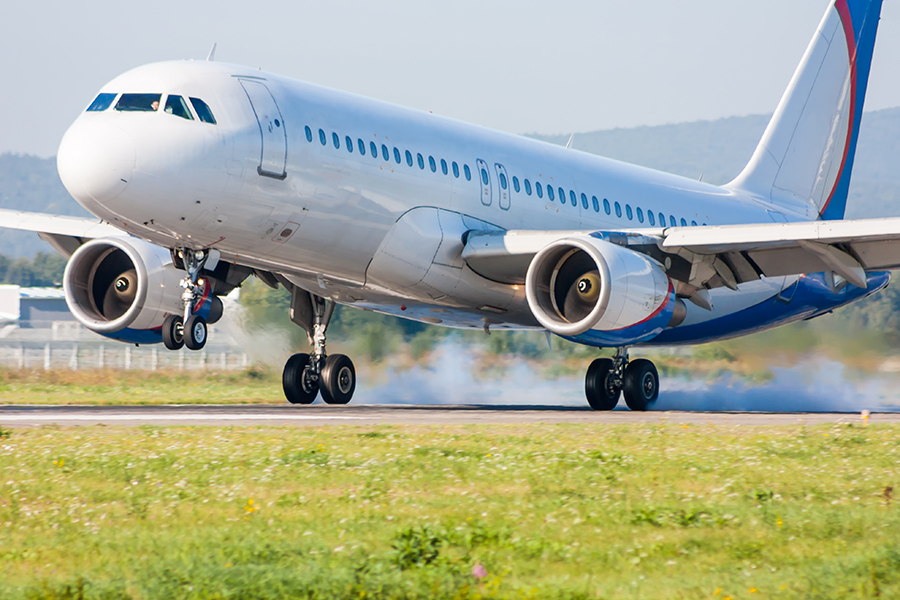
One of the fun things about flying is the variety you face day to day. However, variety can be the opposite of consistency.
Changes in wind speed and direction mean that no two landings will be alike.
The good news?
You can mentally rehearse what you can expect based on what the wind is doing. But, to do that, you must know where the wind is coming from and what it is doing.
If you’ve missed the meteorological report (METAR), don’t worry. The windsock on the airfield gives you an instantaneous readout of where the wind is coming from and its strength.
5) Practice During the Day
We’ll just come right out and say it.
Landing in the day is easier than landing at night. In the darkness, you are robbed of several spatial cues that are more apparent during the day.
If you are trying to get to grips with landing, your best bet is to hone and refine your technique during daylight hours to make it as simple as possible.
6) Keep a Good Scan Rate – Fly by the Numbers
Want to know what professional pilots do when they land?
They have a constant scan rate.
You don’t have to be IFR rated to use the instruments to your advantage. They can really help when making a landing. While VFR flying is mostly based ‘out of the window’, you can ensure better landings by keeping up a good scan rate both inside and outside the cockpit.
By monitoring the instruments and merging the information provided with looking ahead, you will be able to catch developing trends early and get in tune with what a ‘normal picture’ looks like inside and outside the cockpit.
7) Eyes to the End of the Runway
One area that wrong-foots new pilots is where to look as they enter the flare and land the aircraft.
There is one place to look, and one place only, as you get to the latter stages of landing.
The end of the runway.
It’s far easier to judge depth and alignment when staring at distant objects. Many tend to try and look ‘over’ the nose to work out how far they are off the ground.
Try and discipline yourself to keep your eyes fixed on the runway stop end during the last 100 or so feet of the approach.
8) Keep a Constant Aim Point
An easy way to ensure a stable descent profile is to keep your aiming point in a fixed spot in the windscreen.
In an ideal world, your aim should be to keep a constant picture in the windshield, maintain it, and watch it get bigger and bigger.
You are getting low if you notice your aim point moving up the window. Likewise, if your reference point starts to move down towards the bottom of the windshield, you are getting high.
9) Use Flap Accordingly
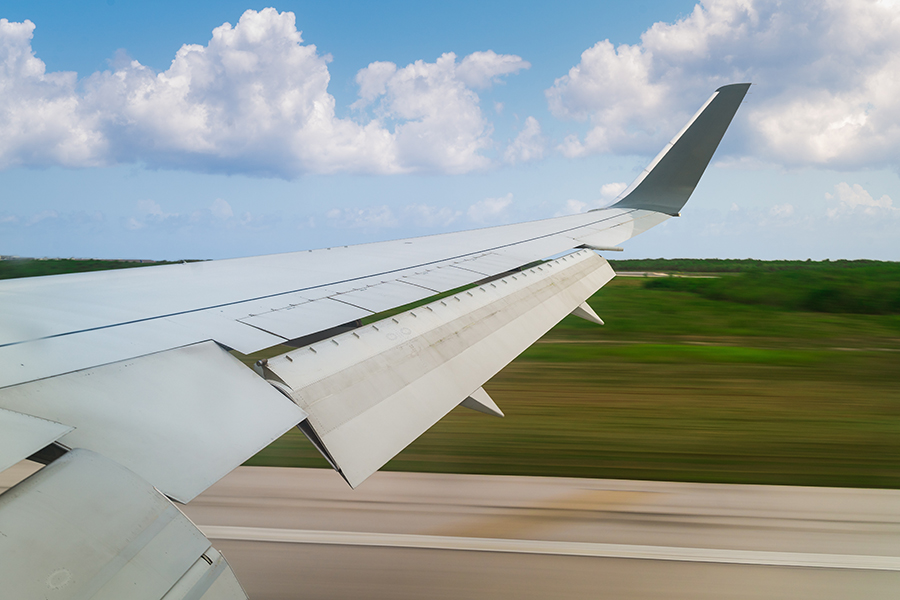
Selective use of flap is a great thing. There are advantages to using full flaps when landing. Namely, it allows you to fly slower and get a lower nose attitude, giving you a better view.
However…
You don’t always have to use a full flap.
In breezy conditions, you may elect to use less flap or even no flap at all!
Why?
With less flap, you’ll have less drag and higher airspeed. This means that your flight controls will be more responsive, giving you a little extra control to handle the conditions.
10) Keep an Eye on the PAPIs
A few things around the airfield can help you ascertain if you are on the correct approach path.
Precision approach path indicators, commonly called “PAPIs,” will tell you when you are on a perfect 3° slope. PAPI’s are 4 horizontal, angled, bicolored lights. There are Five possible combinations. Here’s what they mean: –
| PAPI Indication | Meaning |
| Four Whites | Above the profile |
| Three Whites, One Red | Slightly high on profile |
| Two Reds, Two Whites | Perfectly on profile |
| Three Reds, One White | Slightly low on profile |
| Four Reds | Below profile |
When using the PAPI to help with your landing, remember that often they are calibrated for much larger aircraft (with much higher cockpits), so they aren’t much use in the flare. However, from distances outside of a quarter of a mile, they are an effective aid to help with profile management.
11) Learn Crosswind Landings
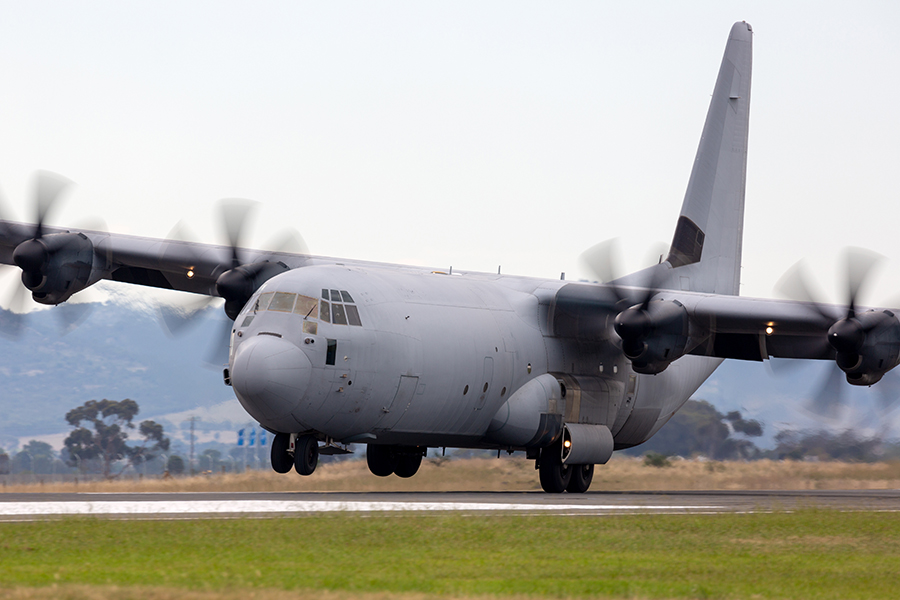
For the beginner, even a mild crosswind can create problems in the landing.
The best way to deal with it?
Well, you’ve got two options.
- Don’t fly on windy days (erm, we don’t think so)
- Learn to land in a crosswind.
We’ll take option 2 any day of the week! Here’s everything you need to know about landing in a crosswind.
12) Nail ALL the Numbers
There can be a tendency to get a little lazy when landing. This is where bad habits creep in. You want to learn how to fly the right way from the get-go.
The popular saying goes, “will do, won’t do”.
Sure, you might think that being 50 feet low is fine at your home airfield. But what will you do if you go to an airport where that isn’t an option?
Our advice.
Work hard to nail all the parameters, that way, you’ll be well equipped to deal with anything. Airspeed, altitude, and centerline alignment are all vital to a good landing.
We, as pilots, call this flying by the numbers. It provides an excellent framework for consistent landings.
13) Know What a Good Landing is
Here’s a question.
Just what is it that determines if a landing is good?
While the old adage “any landing where you can work away and reuse the airplane is a good landing” might sound cool, it cuts no mustard on a flight test or check.
Want the facts?
A good landing is much more than a smooth touchdown (or ‘greaser’ to use popular aviation parlance).
Here are the main things you should be looking for to make a good landing.
- The airplane should touch down at the correct speed and correct attitude
- The airplane should land exactly on the centerline
- The airplane wheels should make contact at the predetermined touchdown point
Notice there was no talk of smooth touchdowns, greasers, and short landing distances?
All those things are nice, but they shouldn’t be used as the main metrics for determining a good landing.
Want proof?
Watch this short video of a carrier landing by an F/A Super Hornet… Is it the smoothest touchdown?
Nope, but it is on the line and on the numbers!
14) Fly The Airplane All the Way
There is often a tendency to make the flare and then resign oneself to accepting whatever the outcome is.
This is not the way to do it.
You are a pilot, and your job is to fly the airplane… All the way down to the ground, even if only a couple of feet.
Stay alert, make small changes, and ensure you make a good landing.
You fly the airplane. It is not flying you.
15) Brief Yourself Beforehand
Want to know what professional pilots do before each and every approach?
A briefing.
Forewarned is forearmed.
You can ensure that you are well equipped to deal with all the approaches can throw at you by talking through and mentally rehearsing relevant points.
Even if you are flying solo, it’s worth talking to yourself about things that need to be considered during the approach that is beyond ‘standard’ or ‘normal’ operation.
Want a quick briefing guide for making an approach and landing?
Give ‘WANTEM’ a try…
Wait, ‘WANTEM’? What’s that?
It is an easy-to-remember acronym that will cover 99% of the things you need to consider during the approach.
Here’s a rundown. Give it a go!: –
Approach Briefing Guide – WANTEM
W – (weather)
- Wind direction
- Visibility
- Cloud cover
- Altimeter setting
A – (Aircraft)
- Planned configuration
- Technical defects
- Equipment onboard
- Fuel remaining and endurance
N – NOTAMS and Navigation
- Airport NOTAMS considered?
- Navigation aids correctly tuned
T – Threats
- High terrain
- Unusual traffic pattern
- Complex ATC procedures
- Short runway
- Busy airspace
- Strong winds
- Icing
E – Errors
Is there anything during the approach that could trip you up if you missed it?
- Parallel runways
- Runway slope
- Wider or narrower runways (giving an unusual perspective)
- Similar numbered reciprocal runways
- Circuit direction
- Correct radio frequency tuned
- Correct fuel tank selected
M – Mitigation and Management
A final general overview of how you will fly and manage your approach. Be sure to include your go-around strategy as a final briefing point.
16) ‘Gates’ for a Good Approach
The ‘M’ of the above briefing guide is a great place to decide how you want to manage your approach.
To do this, good pilots use ‘gates’.
What’s a landing ‘gate’?
Basically, we set two or even three ‘waypoints’ where we get an early indication of how the approach is going so we know we are on the right track. By setting these early and briefing ourselves on what we can expect, we can address any profile deviation early.
An example would be to say: –
“I’ll set a gate at the final turn. Over that reference point, I want to be 900 feet, with flaps full and the aircraft fully trimmed”.
If any of the above criteria aren’t met, you know what you’ll need to do to correct it.
Other places where it is good to set gates include: –
- Downwind
- The base turn
- The final descent point
- Short finals
Private Pilot Landing FAQ
Still got questions after all of our private pilot landing tips?
No worries, here is what we get asked all the time…
How Do Pilots Land Perfectly?
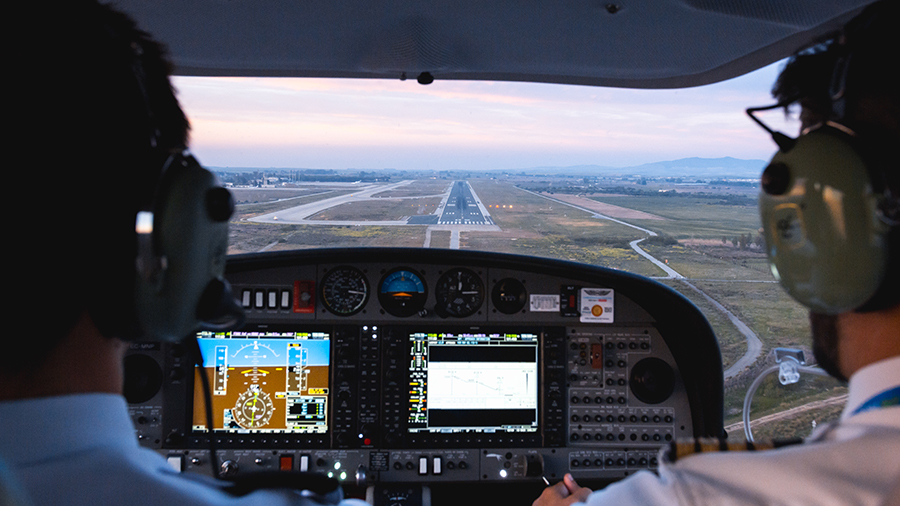
Most pilots who are good at landing have one thing that helps them above all others.
Experience.
Through constant practice, using the correct techniques, they will have developed a ‘feel’ for what looks about right during an approach.
But, here’s the thing…
All pilots suffer from the occasional ‘bad’ landing. So, if you aren’t quite getting it, keep trying. You are only as good as your last landing, so why not work hard to make your last the best it can be?
Assess the ‘trends’ when it comes to judging your landings. Was your last ‘bad one’ a ‘one off’, or is it a regular occurrence? Assess what went wrong and work on correcting it. Not sure where to start? Here’s a quick checklist of things to consider to improve your landing technique.
Was your approach stable, apart from the last part of the landing? – If not, work on correcting this first, and you may just find that your landing improves when you have less to think about.
Is there a specific aircraft configuration that is proving to be troublesome? – Different aircraft configs lead to different ‘pictures’ out of the window. If you can land well with full flap but find flapless approaches aren’t as successful, your technique may require only minor adjustment
Was the landing on your aiming point? Before? After? – Where you touch down tells a story. If you are landing short, there may be a chance that you are flying either too slow or not flaring enough before touchdown.
Conversely, if you find that you are always landing long, there is a real possibility you are either flying too fast or over-flaring just before touchdown.
Why Are My Landings So Hard?
There are a few reasons for a hard landing, and threats are associated with each. Below you’ll find a list of the most common causes and things you need to be careful of. The most common causes of hard landings include: –
Flaring Too Late
The flare is when we change the aircraft pitch close to the runway to arrest the rate of descent. It should reach zero exactly when the wheels touch the runway in an ideal world.
However, if you flare too late, the aircraft still has a rate of descent when the wheels make contact, giving a hard ‘bump’.
Threats
- Risk of airplane gear damage
- Risk of a tail strike if pilot attempts to ‘save’ the flare by snatching
- Risk of propellor damage if nosewheel contacts the runway first
- Potential to bounce
Flaring Too Early
A common trait of new pilots is to become ‘ground shy’ and flare at a point that is too early. They do reduce the rate of descent, temporarily to zero. However, they haven’t made contact with the runway. As a result, the airplane speed washes off, and then the airplane will begin to descend again, leading to hard runway contact.
Threats
- Potential to stall the aircraft
- Risk of tailstrike
- Gear damage
- Loss of directional control and rudder effectiveness
Insufficient Pitch Change During the Flare
Sometimes pilots will flare at exactly the right point. However, they don’t pull back enough to completely arrest the descent. As with flaring too late, there is still a rate of descent when they touchdown, leading to a hard landing.
Threats
- Potential for nosewheel first landing
- Gear damage
Holding Off’ For A Smooth Touchdown
As pilots, we all love making a nice smooth touchdown. However, it is better to make a good landing than a smooth landing. Many pilots will flare at exactly the right height and with the correct technique… Only to fly level a foot off the runway while they wait for a ‘smooth’ touchdown.
This isn’t a good technique.
The airplane speed will slowly decay until the wing simply stops working, leaving the airplane to ‘fall’ onto the runway.
Threats
- Risk of stall
- Decreased visibility over the nose
- Drifting from the centerline in crosswinds
Failure To Anticipate Wind Effects
Unless you are lucky, there will always be some wind element during your landing (and often a crosswind component). While crosswind landings utilize a slightly different technique, a wind straight down the runway can present its own problems.
With a strong headwind, your ground speed is low, and your airspeed is slightly high, meaning a more effective wing and lift.
As a result, you may need to flare slightly later than you are used to, particularly in strong headwinds.
Conversely, your airspeed may be lower during a tailwind and your groundspeed higher.
This can lead to a hard landing if you flare at the normal point. You may need to flare a little earlier in a tailwind to avoid hard contact.
How Do I Stop Bouncing When Landing?
Bouncing when landing is never pleasant. In extreme cases, the pilot may try and overcorrect, leading to a large oscillation (where the magnitude of each bounce gets worse and worse).
Bouncing is not uncommon and is usually the sign of a hard touchdown.
It can be caused by either a too late or too early flare. To avoid bouncing, ensure the aircraft is at the correct speed and try and flare at the correct place.
If you suffer a bounce, try to avoid pulling back further to soften the next bounce.
Instead, hold the attitude and allow the airplane to settle. You could use a little power to increase the airspeed and minimize a higher rate of descent, or alternatively (and this is the best option) execute a go-around, recompose yourself, and try and figure out the cause of the bounce before addressing it in your next landing.
How Can I Improve My Landing Skills?
One thing and one thing only leads to better landings. Practice! Flying is just like any other skill. The more you do it, and with the right technique, the better you will get. Nobody is ace at landing the first few times. One key attribute of successful pilots is that they are ego-free and self-critical. Be humble, look at your weakest areas, and address them!
Once you know what is lacking, you’ll know how to fix it!
Final Thoughts
With the correct technique and following our private pilot landing tips above, anyone is capable of making a good landing! To learn the correct techniques, you will want the best instruction. Where do you find that? Well, here is a great place to start!
